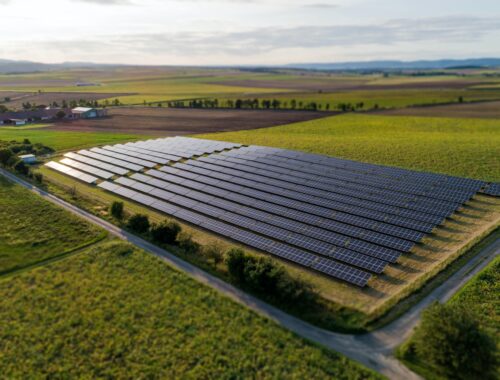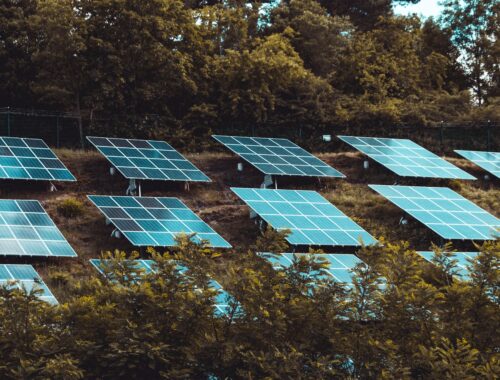
Solar Power in Disaster Relief: Portable and Off-grid Solutions
In times of natural disasters, when conventional power sources are disrupted, access to electricity becomes a lifeline for affected communities. Solar power offers a versatile, reliable, and environmentally friendly solution in disaster relief efforts. Portable solar technologies and off-grid systems can provide critical electricity for communication, lighting, medical equipment, and more. In this article, we will explore the various ways solar power is deployed in disaster relief, its advantages, and its role in improving resilience and response during emergencies.
- Portable Solar Solutions:
Portable solar power solutions are designed to be quickly deployed and provide immediate access to electricity in disaster-stricken areas. Some common portable solar technologies include:
Solar Lanterns: These compact and lightweight devices are equipped with solar panels and LED lights. They can provide illumination during the night, making it safer for people in disaster-affected areas and helping in search and rescue efforts.
Solar Chargers: Portable solar chargers use solar panels to recharge mobile phones, tablets, and other small electronic devices. They are crucial for maintaining communication in disaster-stricken regions.
Solar Backpacks: Solar-powered backpacks have integrated solar panels that can charge small devices and power LED lights. They are often used by relief workers in the field.
Solar Generators: These portable generators are equipped with solar panels and energy storage. They can power larger appliances and medical equipment, making them essential in healthcare facilities and field hospitals.
- Advantages of Portable Solar Solutions:
Rapid Deployment: Portable solar solutions can be quickly set up in disaster-affected areas, providing immediate access to electricity.
No Fuel Dependence: Unlike diesel generators, which require fuel that can be scarce during disasters, portable solar solutions rely on sunlight, making them more resilient.
Silent Operation: Solar technologies operate silently, which can be crucial in settings where noise pollution is a concern.
Low Maintenance: Solar devices require minimal maintenance, making them suitable for areas with limited resources for repairs.
Reduced Environmental Impact: Solar power is a clean and renewable energy source, reducing carbon emissions and pollution in disaster-affected regions.
- Off-Grid Solar Systems:
In addition to portable solutions, off-grid solar power systems are used in disaster relief to provide larger and more sustained access to electricity. These systems can include:
Solar Microgrids: Microgrids are self-contained energy systems that can power an entire community or critical infrastructure. They consist of solar panels, energy storage, and distribution infrastructure.
Solar Water Purification: Solar desalination and water purification systems can provide clean drinking water, which is often in short supply during disasters.
Solar-Powered Cooling and Refrigeration: In situations where temperature control is vital, such as storing vaccines and medical supplies, solar-powered cooling and refrigeration systems play a critical role.
Mobile Solar Units: Mobile solar units are equipped with solar panels and energy storage and can be deployed rapidly. They can provide power for medical facilities, communication hubs, and disaster coordination centers.
- Advantages of Off-Grid Solar Systems:
Energy Independence: Off-grid solar systems can provide a reliable source of electricity without relying on the central grid, which may be damaged or overwhelmed during disasters.
Scalability: These systems can be scaled to meet the energy needs of various settings, from small communities to large hospitals and disaster response centers.
Long-Term Use: Off-grid solar systems can be used for extended periods, aiding in recovery and rebuilding efforts.
Remote Monitoring: Many off-grid systems are equipped with remote monitoring capabilities, allowing for real-time management and maintenance.
- Real-World Applications:
Portable and off-grid solar solutions have been successfully deployed in various disaster relief scenarios:
Haiti Earthquake (2010): Solar lanterns and chargers were distributed to provide lighting and communication in areas affected by the earthquake.
Nepal Earthquake (2015): Solar-powered microgrids were installed in remote villages to power lighting, telecommunications, and medical equipment.
Hurricane Maria (Puerto Rico, 2017): Mobile solar units were used to restore power to medical facilities, and solar chargers were distributed to help people recharge their devices.
COVID-19 Response: Solar-powered cooling and refrigeration systems have been used to store vaccines in areas with unreliable or no electricity supply.
- Building Resilience:
The use of solar power in disaster relief not only addresses immediate needs but also contributes to long-term resilience. By incorporating solar solutions into disaster preparedness and recovery plans, communities and governments can better withstand and recover from future disasters. The use of clean energy in disaster response also aligns with global efforts to reduce carbon emissions and combat climate change.
Solar power, whether in the form of portable devices or larger off-grid systems, plays a crucial role in disaster relief efforts. By providing access to clean and reliable electricity, solar technologies enhance communication, lighting, medical services, and overall resilience in disaster-affected areas. The versatility, low maintenance requirements, and environmental sustainability of solar power make it a valuable tool in mitigating the impacts of disasters and supporting communities during their recovery.
You May Also Like

Solar Power and the Environment: Reducing Carbon Footprint
May 30, 2023
Solar Power in Developing Countries: Promoting Energy Access
June 15, 2023

